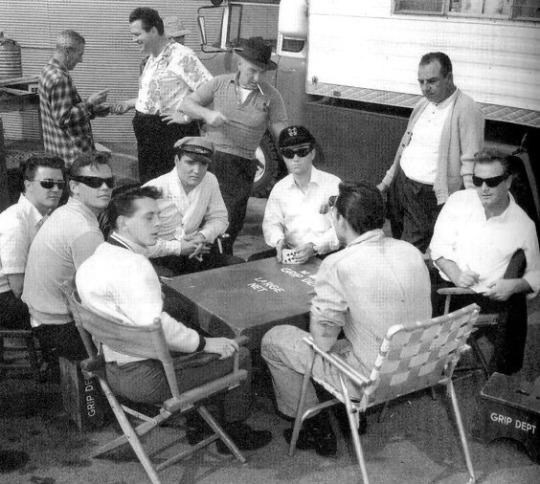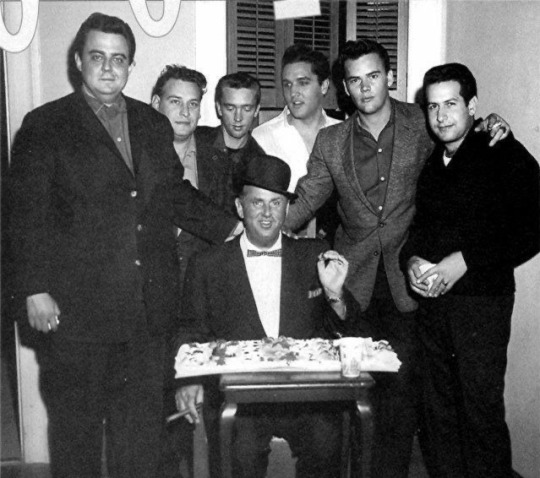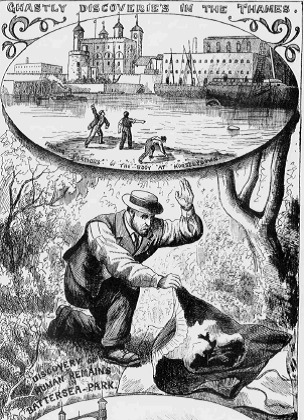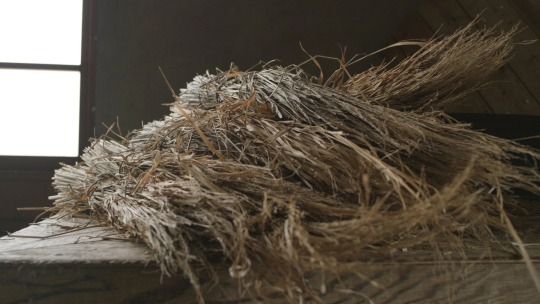#albert schilling
Text





I watched Napola - Before the Fall last week and huh boy, that one sticks with you.
A wonderful movie, but I felt the urge to add my alternate ending to my screen redraw attempts :3
#fanart#artists on tumblr#gay#screen redraw#napola#before the fall#napola - elite für den führer#Friedrich#Albert#max riemelt#tom schilling#Movie#ww2#study#Friedrich x Albert#digital painting#Movie Spoiler#illustration#lgbt#hurt#blood
257 notes
·
View notes
Note
Do you consider the memphis mafia trustworthy sources on Elvis? Idk if I always believe some of the stuff they’ve said about elvis
thank you so much for this ask!! I have way too much to say about this topic, therefore I apologize in advance for how long this is 🤧
firstly I think it’s important to clarify who the Memphis Mafia actually consisted of: based on what they themselves have said, it was Red West, Sonny West, Alan Fortas, Marty Lacker, Lamar Fike, and Billy Smith
I was confused why people like Jerry Schilling, Charlie Hodge, Joe Esposito, Larry Geller, George Klein, etc. etc. weren’t technically considered Memphis Mafia until I learned that Elvis’ entourage were categorized into two groups, the Memphis Mafia, and the others
I also really recommend for every fan to read Alanna Nash’s “Elvis and the Memphis Mafia” which is just an oral history from Billy Smith, Marty Lacker, and Lamar Fike
and then to watch the documentary, it is 5 hours but it’s so worth it, I’ve literally rewatched it at least 8 times at this point because it’s my favorite Elvis documentary 😩!!
youtube
I also want to say if you are going to read from one of them, you should try to read from all of them because they all have their own unique experience with Elvis and therefore all have their own viewpoints/opinions and biases *which is why it’s important to cross reference between them
For example in the Alanna Nash book there are several instances where Lamar Fike, Marty Lacker and Billy Smith all have a different opinion on something and you basically have to decide for yourself which one you agree with
I’m just going to be breaking down each Memphis Mafia member, as I’ve been fortunate enough to read each of their books, and say if I think they are trustworthy sources:
Lamar Fike: Personally, I think he is one of Memphis Mafia members that you really have to be cautious about. If y’all didn’t know he was Albert Goldman’s main source for that horrible book, “Elvis”. In Alanna Nash’s book, Lamar Fike spends a good majority of the time disagreeing with everything Goldman wrote, and said that Goldman would twist his words and retell things to fit his own agenda. He said “even though I was one of his main sources, and shared in the royalties, I couldn’t control Albert”. He admitted he did the book for money which is why I lost respect for Lamar because he knew that Albert was saying things that weren’t true and that the book’s main purpose was to make Elvis look bad. I would also be cautious of Lamar because he tends to twist reality just a little bit and over exaggerate things. For example whenever he tells the story of Elvis and Priscilla meeting, he always says that it was he who introduced them “Elvis this is Priscilla, Priscilla this Elvis”. But no one else who was in the room has told it that way, Lamar just inserted himself into the scene (he also once said she was 13 when we obviously know she was 14). So yeah I would really recommend to cross reference everything Lamar says before believing it. He just tells things in a really blunt (and lowkey funny💀) way, which makes it interesting insight, but from what I have also seen he is more than willing to exaggerate things just to be able to tell a “better” story
Marty Lacker: I really really enjoy reading his viewpoint and his book is one of my favorites out of the bunch however I think he too often lets his own biases affect his story telling. This man really really really hated Priscilla 😭 So much so that every time he talked about her it was in a negative light. I’m not saying Priscilla is perfect, she has done many things I don’t agree with, however, none of these men knew what it was like to be in her shoes so I’m just wary of them placing so much blame on her when she was so young, and I find that Marty can be a little unsympathetic in that regard (but again I’m not saying that Priscilla hasn’t done things that deserve criticism). Also Marty Lacker wasn’t around in the late late 70s so I would just be cautious of anything he says about that time because he simply wasn’t there to know. But in general, beside his obvious biases, I would say he is a trustworthy source
Alan Fortas: He was the first Memphis Mafia member to pass away in 1992, we sadly didn’t get to hear too much from him, but I’m very grateful to have his book. Since he wasn’t around much in the late 60s and not at all in the 70s, his best stories come from the 50s and early-mid 60s. He provides a really unique insight especially when it comes to Priscilla and Elvis because he was more or less her chauffeur when she first came to the United States. He also knew Frances Forbes, Gloria Mowell, Heidi Heissen and Arlene Cogan and spends a decent chunk of his book talking about them. I can’t say it is in a way that looks good for Elvis because Alan really disagreed with those relationships, even though he said he knew nothing s*xual was going on, he genuinely couldn’t fathom why Elvis, who could have any woman he wanted, wanted to spend time with teenage girls, including Priscilla. But nothing in his book I found to be untrue and everything he says corresponds with what other has said, plus he has some really great stories about the movie-making times and his beloved chimpanzee, Scatter (I know it was Elvis’ technically but Alan was his real mom lmao) but I overall trust him as well
Red and Sonny West: I’m about to get controversial; I think these are two men, that as Elvis fans, we have been a little too critical of. It’s not fair to completely write off their experiences with Elvis just because of the book they did, which in retrospect, doesn’t say anything different from what the other Memphis Mafia men have said, it was just horribly timed. But I do want to clarify that I don’t support their decision on writing “Elvis: What happened” in 1977 and at the end of the day I will always support Elvis over anybody else. As for their credibility, Red West has one of the most important perspectives imo because he was literally the first Memphis Mafia member. He was with Elvis in highschool, in Germany, during the movies, during the comeback special, during Vegas, during the American tours, he only wasn’t there for the very last year of Elvis’ life. Unlike some of the other men here, he never stopped being with Elvis, except for of course the end. I have read the book he did in 1977 and I have watched tons of his interviews and I’ve personally never come across a story that wasn’t told/referenced by another Memphis Mafia member. I do think he is trustworthy in that sense but I think he has gotten very defensive in the past and is willing to throw Elvis under the bus in order to protect his image. I feel like it is the same thing with Sonny West. These men felt betrayed by Elvis, they got fired, and they both definitely harbored vengeful feelings for a while so you have to take that into account when listening to their stories. For example when they talked about how Elvis hired h00kers in the 1977 book they didn’t mention that they were also cheating on their wives and actually slept with the hired girls while Elvis only wanted to watch the girls simulate lesbian s*x. In that book especially, they often conveniently left out that they indulged in the same kind of behavior Elvis did. But with age, I think they both mellowed out and ultimately realized that they betrayed Elvis also, and they have both said they have regretted the book. The documentary I linked above really helped me understand their perspective more, and while things ended badly between Elvis and them, I do think both parties still cared about each other. So while both of their perspectives are very important (and I think Red was one of Elvis’ truest friends), I wouldn’t fully trust anything they have said until I checked another source to confirm
Billy Smith: He is sadly the only Memphis mafia member still with us and he still makes videos answering questions on the YouTube channels Elvis fans matter and Memphis Mafia kid. I really do enjoy reading Billy’s perspective and he is one of the few people who were with Elvis from the very beginning (childhood) to the very end. But Billy rarely actually went on tour with Elvis and he also wasn’t around for most of the movie time, so his best stories are about his times with Elvis at Graceland imo. They had such a special relationship and I think Billy was the closest thing Elvis had to a brother (y’all have to read about the oath he and Elvis took, it almost made me cry😭). However this man, like anyone, is not without his biases. When reading the Alanna Nash book you can see that Billy’s main purpose is to protect Elvis and the Smith family so much so that I think he denies some things solely because he believes it will make his family look bad. For example when in the book they talked about how Gladys may have had some Jewish blood in her, Billy Smith who is Gladys’ nephew, just shot that down right away. I didn’t think much of it until Billy Smith later on admitted in the book he was slightly prejudiced against black people and jewish people because of how he was raised. But that book was also in the 90s and I haven’t seen him speak in the way since so hopefully he has changed. This man really hated Priscilla, and especially hated Ginger, so take into account these biases as well. For example, in the Nash book, he was dead set on saying that Ginger called the national enquirer after Elvis passed away. Many fans believe this also but there is just no proof to support it. If you are someone who hates Ginger because you believe she called the enquirer (I did too at one point), I really recommend reading this https://elvisdecoded.com/2021/03/13/the-ginger-hit-job/
Another reason to be slightly cautious of Billy Smith is that his opinions have changed so much since the Alanna Nash book 😭 Like how I said he hated Priscilla and Ginger, that seems to be no longer the case, at least on his YouTube channel. I was so surprised when he praised them both in the YouTube video “Elvis’ relationship secret”. He even said Ginger was good for Elvis and that she loved him- I was shook because he hated her in the 90s!!! But anyways-I would say he is trustworthy and he was no doubt one of the dearest people to Elvis’ heart but it’s always good to take into account biases, and cross reference everything
To wrap this up- They have all told the good, the bad and the ugly, and as fans of Elvis it can be hard to accept the “bad and ugly”(like was he sometimes completely unreasonable, demanding, and temperamental? yes! but do we still love him? yes!) These guys just have such a unique perspective and we are truly lucky that they have opened up their lives with Elvis to us, even if it is stories that we necessarily don’t want to accept. But there is not a single doubt in my mind that all these men loved Elvis, despite what some of them have done, and that Elvis loved all these men. The documentary I linked above has made me cry every time I have watched it because they all cried in it and something about grown men crying just hits me different okay 😭
also if anybody read all this kudos to you, I’m sorry for typing so much lmao 😩💗




#thank you for the ask<3!!#I need to learn how to get my point across with less words😭#but I hope this helped!!#I would love to know what y’all think about them also#elvis presley#elvisaaronpresley#elvis#memphis mafia#Lamar fike#marty Lacker#Alan Fortas#red west#Sonny west#Billy smith#Elvis history#Elvis asks
56 notes
·
View notes
Note
I will say this; when it comes to Scotty, Lamar and the rest of the Memphis Mafia, always beware of what the "boys" say. I tend to take their stories with a grain of salt. According to a 2008 article,
"One would think that the various members of Elvis’ entourage, having worked and socialized closely with him for years, would be convincing sources of information. However, over the years several of the “boys” have proved themselves far from reliable when recalling their times with Elvis. Back in 1977, Red West, Sonny West, and Dave Hebler’s book, Elvis: What Happened?, was filled with bias and inaccuracies, Lamar Fike was a main conduit of misinformation for Albert Goodman’s deeply flawed 1981 Elvis biography, and Byron Raphael’s article about Elvis’ sex life in a 2005 issue of Playboy is completely spurious.
Of course, not all those close to Elvis have proved unreliable. Joe Esposito and Jerry Schilling are two who seem to have told their stories about Elvis with honesty and balance. The lesson here is that when reading these “I-was-there-books,” the reader must keep an open mind when it comes to accuracy, honesty, and bias.
In the end, I’m not suggesting we should all be cynical about everything that has been and will be written about Elvis. And I don’t think there is anything to be gained by arguing over isolated facts. However, the legacy of Elvis should be important to all of his fans. And if it takes setting the record straight once in awhile, then sign me up for the crusade."
hiya nonnie ! i'm guessing you're the same person who sent this same quote to norah about the palm springs girl a couple days ago- if so, howdy! (if not, also howdy 👋)
but yes, i think this is a really good point to make again ! (i had that post in mind when answering this ask today, lol)
it's important to remember that not just the mafia, but virtually every figure in elvis' life wrote a book or otherwise sold their story (whether marketed as a personal memoir or not) after his death - there is a tremendous wealth of information available about elvis and it is almost in its entirety anecdotal and virtually non-verifiable bc of that... only made more difficult by the fact that so much of it directly conflicts.
and of course that can be intentional (like in the case of elvis: what happened?, where explicit scandal was the selling point) or not- its been almost 50 years since elvis died, after all. its possible and even likely that information is misremembered!
i think it's a difficult but necessary task for us to wade through sources and decide who to trust, and the basis by which that trust is given varies for every fan, im sure! personally, i don't trust any of the stanleys, ever, or the wests for a significant period after his death (altho ill give more credibility to their more recent documentary appearances before their deaths). i do trust jerry and larry, and for the most part joe, george, and the smiths. scotty, marty, and lamar can go either way depending on what you're reading, etc etc turtles all the way down.
and remember, too, that none of these guys were academics! even removed a few layers from those original sources, when we're looking at further literature written by elvis historians (pietro, dundy, or nash, for example), their information traces back to someone who says something like "i remember-" or "im pretty sure-". (guralnick is the only one im willing to give a tentative pass on this front- and that's only cuz content-wise the majority of his books are about people and situations adjacent to elvis' life at the time! and that information is much more conducive to credible research. we all remember how many pages of last train to memphis is took for elvis' birth to even be covered 😅 but all of his interview-based elvis factoids fall prey to the same criticisms.)
on a primary basis, this isn't peer-reviewed amd intellectually-neutral research, it's the lives and memories of an amalgamation of people, and they can all be unreliable narrators. it's important to factor in how each one viewed elvis and which parts of him they understood, because they all loved him, but they all knew him differently.
the spirituality point is a big one here, for instance- for the, shall we say, stoner mellow types like larry and jerry, they can speak about this facet of elvis' personality very positively! but most of the rest of the mafia doesn't do that. their personal convictions color their recollections and interpretations thereof in a way that's not really about elvis at all, but about their own upbringing/values/etc.
and it's hard, too, not only objectively but emotionally, for us [junior historians? elvis enthusiasts? fans?] to acknowledge these facts, to accept that the people we want to trust most- the people elvis trusted most- aren't always very good sources and didn't always have either his best interests OR the truth in mind (whatever that may be).
when it all comes down it it, a lot of elvis lore can and should be taken with a grain of salt! so watch your cholesterol 🤭🧂

#ask#i think its veritably impossible to get any kind of 'true' picture of es life this far on#read: completely accurate#there are literally hundreds of books on the subject and more being published all the time#and it goes all the way back- we all know the controversy surrounding his goddamn birth certificate lmao#if your interest is purely intellectual none of this matters#but if your interest extends to personally maintaining his legacy on the other hand..#you have a responsibility to think critically while doing so#the unexamined life is not worth living etc etc
27 notes
·
View notes
Note
I will say this; when it comes to the Memphis Mafia, always beware of what the "boys" say. I take their stories with a grain of salt. According to a 2008 article,
"One would think that the various members of Elvis’ entourage, having worked and socialized closely with him for years, would be convincing sources of information. However, over the years several of the “boys” have proved themselves far from reliable when recalling their times with Elvis. Back in 1977, Red West, Sonny West, and Dave Hebler’s book, Elvis: What Happened?, was filled with bias and inaccuracies, Lamar Fike was a main conduit of misinformation for Albert Goodman’s deeply flawed 1981 Elvis biography, and Byron Raphael’s article about Elvis’ sex life in a 2005 issue of Playboy is completely spurious.
Of course, not all those close to Elvis have proved unreliable. Joe Esposito and Jerry Schilling are two who seem to have told their stories about Elvis with honesty and balance. The lesson here is that when reading these “I-was-there-books,” the reader must keep an open mind when it comes to accuracy, honesty, and bias.
In the end, I’m not suggesting we should all be cynical about everything that has been and will be written about Elvis. And I don’t think there is anything to be gained by arguing over isolated facts. However, the legacy of Elvis should be important to all of his fans. And if it takes setting the record straight once in awhile, then sign me up for the crusade."
This is a really good point and is well taken, thank you Nonnie. Thanks for taking the time to write to me, and I agree, history is always constructed refractions of what happened, and is shaped by the bias and agendas and axes that those who are left have to grind. This whole story about the girl in Palm Springs definitely shows this, and its actually been a really good lesson for me in soooo many ways. As a fan, as a citizen of tumblr, as a historian (I'm going to go ahead and claim that everyone in the EP fan community is a historian because we are all shifting through traces of the past to access him). I think you really pushed me to reconsider how I am evaluating the traces of Elvis that I grasp at here and elsewhere.
I was thinking to myself, should I take the passage I copied from Alana Nash's book Elvis and the Memphis Mafia down? I mean, I put it up in a bit of a hurry in-between meetings at work and I didn't really have time to edit or respond. I also didn't really think twice, I was just responding to an ask about a conversation on another post. And the truth is that the first version, where I quote the book, gave incorrect information, and ts veracity is impossible to conclusively prove.
But I've decided to leave it up, because I love the discussion that followed and that is now a part of that post. I am relatively new to active fandom, and I am learning everyday. That whole discussion shows how fans need to be aware of references that are questionable, as well as those that are not, because it becomes part of our shared understanding and useful for how we elevate the stories we encounter about Elvis. The thing I love about tumblr is how random artifacts circulate with stories about specific incidents, because I learn alot this way and I love when something pops up. But I also cannot tell you how often I wish they had a date or a source or more information. I also can't tell you how much I wish there was a pinterest tumblr integration that was easier than me creating pins over there for posts but that is a whole other post....
What books or interviews or websites have you found the most useful for learning about Elvis? I guess I put that question to everyone reading this.
thanks for your insightful advice and for discussing this important topic with me!!
xoxox
norAHHHHHH
this is my elvis history is hard work face v
8 notes
·
View notes
Text
The Best Electronic Rising By Anja Schneider 2023

- DATA CREATED: 24/04/2023
- QUALITY: MP3/320 kbps
- GENRE: House, Techno (Peak Time / Driving), Dance / Electro Pop, Tech House, Deep House, UK Garage / Bassline, Melodic House & Techno
Tracklist
Abandon the Rule (Ahadadream Remix) - ELIZA, Ahadadream .mp3
Addicted To Bass - Farrago, Amelie Lens .mp3
Ain't no Sunshine - Jacob Groening Remix - K2W0, Jacob Groening .mp3
All I Need - LP Giobbi .mp3
Architechno - MCHL51 .mp3
Beam - Recondite .mp3
Blooming Future - Jason Johnson (DE) .mp3
Cormoran - Jonas Saalbach .mp3
Dance And Kill - Ellen Allien, Ash Code .mp3
Dancing Thing - VisionV .mp3
Dark Days - Jonas Schilling .mp3
Dark Sun - Hidden Empire .mp3
Days Like This - Johannes Albert Dance Mix - Tilman, Johannes Albert .mp3
Devotion - Darksidevinyl .mp3
Elements - Torsten Kanzler .mp3
Escape - Stil & Bense, Margret .mp3
Everything - MAXI MERAKI .mp3
Flat White - Booka Shade .mp3
Flickering Screens - PARI, Klanglos .mp3
Funkenflug - Einmusik .mp3
Gator
Read the full article
0 notes
Text
The Best Electronic Rising By Anja Schneider 2023

- DATA CREATED: 24/04/2023
- QUALITY: MP3/320 kbps
- GENRE: House, Techno (Peak Time / Driving), Dance / Electro Pop, Tech House, Deep House, UK Garage / Bassline, Melodic House & Techno
Tracklist
Abandon the Rule (Ahadadream Remix) - ELIZA, Ahadadream .mp3
Addicted To Bass - Farrago, Amelie Lens .mp3
Ain't no Sunshine - Jacob Groening Remix - K2W0, Jacob Groening .mp3
All I Need - LP Giobbi .mp3
Architechno - MCHL51 .mp3
Beam - Recondite .mp3
Blooming Future - Jason Johnson (DE) .mp3
Cormoran - Jonas Saalbach .mp3
Dance And Kill - Ellen Allien, Ash Code .mp3
Dancing Thing - VisionV .mp3
Dark Days - Jonas Schilling .mp3
Dark Sun - Hidden Empire .mp3
Days Like This - Johannes Albert Dance Mix - Tilman, Johannes Albert .mp3
Devotion - Darksidevinyl .mp3
Elements - Torsten Kanzler .mp3
Escape - Stil & Bense, Margret .mp3
Everything - MAXI MERAKI .mp3
Flat White - Booka Shade .mp3
Flickering Screens - PARI, Klanglos .mp3
Funkenflug - Einmusik .mp3
Gator
Read the full article
0 notes
Text
Barry Bonds, Roger Clemens Headline Baseball Hall of Fame Contemporary Era CandidatesBonds, Clemens Headline Baseball Hall of Fame’s Contemporary Era Candidates
Barry Bonds, Roger Clemens Headline Baseball Hall of Fame Contemporary Era CandidatesBonds, Clemens Headline Baseball Hall of Fame’s Contemporary Era Candidates
Barry Bonds and Roger Clemens are included among a list of eight former players who have been selected to appear on the Baseball Hall of Fame’s Contemporary Baseball Era ballot for the Class of 2023.
Bonds and Clemens will be joined by Don Mattingly, Albert Belle, Fred McGriff, Curt Schilling, Rafael Palmeiro and Dale Murphy.
The Contemporary Baseball Era Players Committee is a 16-person panel…

View On WordPress
0 notes
Photo



'Pfarrkirche St. Peter und Paul', church
Stüsslingen, Solothurn, Switzerland; 1949-50
Hermann Baur, Emil Schubiger, Albert Schilling
see map | related video
via "Das Werk" 31 (1958)
#architecture#arquitectura#architektur#architettura#hermann baur#emil schubiger#albert schilling#kirche#church#igreja#stusslingen#solo#switzerland#swiss architecture
44 notes
·
View notes
Text
Longchamp Otoño Invierno 2020 en la New York Fashion Week
Longchamp Otoño Invierno 2020 en la New York Fashion Week

Sophie Delafontaine ha diseñado una colección maravillosa para Longchamp. El próximo otoño invierno nos lleva de lleno a los años 70. Sin duda esta década estará de moda la próxima temporada. Muchos diseñadores beben de ella ahora mismo. La era de lo deportivo ha llegado otra vez a las pasarelas. Tenemos culottes, prendas que separadas dan mucho juego y que combinadas crean conjuntos divinos.…
View On WordPress
#achenrin madit#africa peñalver#alberte mortensen#alina bolotina#anok yai#ayobami okekunle#blesnya minher#carolyn murphy#cyrielle lalalnde#denise ascuet#desfile#estelle chen#evelyn nagy#fall#felice nova noordhoff#giselle norman#hannah motler#hyun ji shin#isabelle schilling#janaye furman#kaia gerber#kaila wyatt#kris grikaite#kyla ramsey#lexi boling#liya kebede#longchamp#lys lorente#maartje verhoef#maike inga
0 notes
Text
Summary Statement, 4th Quarter, 1863 – 1st Michigan Light Artillery
Summary Statement, 4th Quarter, 1863 – 1st Michigan Light Artillery

Michigan “regimented” its batteries in the fall of 1862, and from that time the batteries were officially “lettered” within that regimental system. However, old habits died hard. The clerks at the Ordnance Department continued to reference those units by their numbered designations through the end of 1863. And in their defense, the state’s Adjutant General, in his end of year report, gave the…
View On WordPress
#10th Michigan Battery#11th Michigan Battery#12th Michigan Battery#1st Michigan Battery#1st Michigan Light Artillery#2nd Michigan Battery#3rd Michigan Battery#4th Michigan Battery#5th Michigan Battery#6th Michigan Battery#7th Michigan Battery#8th Michigan Battery#9th Michigan Battery#Addison N. Kidder#Adolph Schill#Albert F. R. Arndt.#Almerick W. Wilbur#Battery A 1st Michigan Artillery#Battery B 1st Michigan Artillery#Battery C 1st Michigan Artillery#Battery D 1st Michigan Artillery#Battery E 1st Michigan Artillery#Battery F 1st Michigan Artillery#Battery G 1st Michigan Artillery#Battery H 1st Michigan Artillery#Battery I 1st Michigan Artillery#Battery K 1st Michigan Artillery#Battery L 1st Michigan Artillery#Battery M 1st Michigan Artillery#Byron D. Paddock
0 notes
Text
Elizabeth “Lizzie” Jackson
Elizabeth Jackson (aka Lizzie)
Birth date: March 18, 1865 Killed and found (age): Ca. June 3rd 1889, June 5th 1889 (24)
Complexion: Fair Eyes colour: ? Hair colour: Sandy, light red or auburn Height: 5’5” (165 cm) Occupation: domestic servant
Clothes at the time of murder/discovery: Grey Ulster's coat, black dress button, brown linsey dress, burgundy skirt with red selvedge, blue-and-white waistband/drawers bearing the name of L. E. Fisher, ?
Resting place: ?
***
Early life
Elizabeth Jackson, also known as Lizzie, was born on 18 March 1865 in the neighbourhood of Chenie-place, Pimlico (City of Westminster). She was the daughter of John Jackson, a stonemason who was born in County Tipperary, Ireland, and his wife Catherine, who was also born in Ireland but hailed from County Cork. She was the youngest of three daughters, the others were Annie and May, and she also had a brother, James. When she was about twelve she had an accident with a vase leaving her a scar in her left forearm.
In 1881, when she was sixteen, she had gone out to work as a domestic servant in the neighbourhood of Chelsea. She had been described as “of excellent character” until, in November 1888, something happened which occasioned her leaving both her job and her home. Thereafter, she had been living in various common lodging houses in the vicinity of Chelsea. Her last known address was 14 Turk’s Row, which was near Chelsea Barracks. It was there when Lizzie and her sister Anne had a nasty row, as the latter accused the former of picking up men for immoral purposes.
Later months
In November 1888 she was well known to the local police, and she took up with a casually met Cambridgeshire man, a thirty-seven-year-old millstone grinder named John Fairclough (born March 1853), with whom she moved to Ipswich in January 1889. He said they met in a public house at the corner of Turk’s Row. She had told him she had been living with a man named Charlie but the relationship was over. She bought a pair of drawers bearing the name "L.E. Fisher" at a lodging-house at Ipswich, they had belonged originally to a domestic servant at Kirkley, near Lowestoft, and had been sold as old rags by her mother while staying near her daughter in November 1888. Elizabeth and John were in Colchester on March 30th 1889 and, unable to find work there, walked all the way back to London where they settled into lodgings in Manilla Street, Millwall, taking a room at four Schillings a week, with a Mrs. Kate Pane, who would afterwards testify that Fairclough was violent in his treatment of Elizabeth, knocking her about, irrespective of her being five months pregnant.
The pair parted on 28th April, Fairclough going off to Croydon in search of a job. Mary Minter, a family friend of Elizabeth’s, gave her an Ulster’s coat not long before she disappeared. On May 31st Catherine Jackson saw his daughter only one day or two before she was murdered in Queen's Road, Chelsea, and the two spent the time together. Lizzie was a 24 year-old homeless prostitute about eight months pregnant, and living in London's Soho Square at the time of her murder in early June 1889.
Discovery
On Tuesday 4th June 1889 in the morning, one package containing portions of a woman's body was found by two boys, as witnessed by waterside labourer John Regan at George's Stairs, Horselydown (just below London Bridge). At 10:00am, standing along the bank of the Thames, Regan noticed a couple of boys “throwing stones at an object in the water”. When one of the boys pulled the package out of the water, and realizing the contents of the package were that of human remains, contacted the Thames River police division. These remains were taken to Wapping police station by Alfred Freshwater of the Thames Police. Several experienced Scotland Yard detectives and Dr. Thomas Bond, the chief surgeon to the Metropolitan police, proceeded to Wapping (a district in East London in the London Borough of Tower Hamlets) to commence investigations. Among the first detectives and police at the scene was Melville Macnaghten, the newly appointed Assistant Chief Constable of the Criminal Investigation Department (CID).
The remains were the lower part of a female body; and she had evidently not been dead long as Dr. Bond noticed a slight ooze of blood from the ragged edges of the cut parts of flesh. Dr Bond was instantly of the opinion that the body part was that of a young woman and that an attempt had been made to carry out an illegal operation, which had been successful. None of the press reports described exactly what was found within this parcel to draw these conclusions from, but according to the medical jurisprudence book 'A system of legal medicine', which contains details from some of Dr. Bond's cases, there were flaps of abdominal skin and the uterus of the victim, complete with cord and placenta, "... The skin was fair, and the mons veneris was covered with light sandy hair..."
Almost simultaneous to the discovery by the two boys, was the finding of another parcel by fifteen-year-old Isaac Brett, of 7 Lawrence Street in Chelsea, who earned his living as a wood cutter. When taking a walk near the Albert Bridge, Battersea (South West London, within the London Borough of Wandsworth, about 5 miles from the spot of the first discovery), Brett decided to take a bath. Upon submerging he noticed a strange object being nudged by the tide against the muddy foreshore and tied with a bootlace. He took it ashore but didn’t open it. Upon the advice of a passing stranger, he took it straight to the Battersea Police Station, where sergeant William Briggs of V division opened it. The assistant divisional surgeon for Battersea, Dr. Felix Charles Kempster, was called in. He declared it to be a portion of a human thigh from hip to knee; his opinion was that the limb had not been in the water above 24 hours. The white cloth was the right leg of a pair of drawers, on the waistband (an item of ladies underclothing) of which had the name L.E. Fisher written in black ink along it. Fastened to another portion of the material was a piece of tweed seemingly torn from the right breast area of a lady's long Ulster coat.
The local police immediately alerted Scotland Yard and Inspector John Bennett Tonbridge or Tunbridge of the criminal investigation department alerted Dr. Bond, who concluded that the two body parts corresponded and there were no doubts that they belonged to the same body, further proof that backed this up came from the fact the parcel found at Horselydown was wrapped in a portion of underwear identical to the portion found with the thigh section at the Albert bridge and also contained another portion of the bottom left hand side of a woman's Ulster coat. The whole parcel had been tied up with mohair boot laces and was slightly stained with blood. Further examinations of the thigh, by Dr. Kempster and Mr. Athelstan Braxton Hicks found it to be the left one, and most likely that of a young woman within the 20 to 30 age range. Bruises made by finger marks were also found upon the thigh, and these were concluded to have been made before death.
On Wednesday 5th June 1889, the coroner of East Middlesex Wynne Edwin Baxter, who had presided over the inquests of Mary Ann Nichols, Annie Chapman and Elizabeth Stride, opened an inquest at the Vestry hall, Wapping, into the remains found at Horselydown. He expressed doubts as to whether it was a proper case for an inquiry as it was difficult to draw the line as to what part of a body was sufficient enough to warrant an inquest. However, he had decided that an inquiry should be held and he summoned a jury. John Regan and Alfred Freshwater gave evidence at the inquest and repeated their stories. The inquest was then adjourned until the 3rd of July.

On Thursday 6th June, in the afternoon, Joseph Davis, a gardener at Battersea Park, was at work near some greenery rhododendron shrubbery when he noticed a parcel laying on the ground in an area that was closed to the public. The shrubbery was situated about 200 yards from the shore of the Thames and was a place not frequented usually by the public or employed staff at the park. On nearing the bundle, that was rides with white Venetian blind cord, he noticed an unpleasant smell emanating from it. Upon open it, Davis threw the thing in shock, horrified to recognise parcelled therein bits and pieces from a human body wrapped in a burgundy-coloured skirt. Off he shot in a desperate dash in search of one of the patrolling park policemen. He found police constable Walter Augier of V division, and conveyed the parcel to Battersea police station by means of a garden basket. Dr Kempster, whose surgery was only a few yards from the police station, was alerted to the find by Sergeants Viney and Briggs, Viney being in charge of local inquires into the case. Telegrams were despatched to police headquarters describing the remains found as thus: the upper part of a woman's trunk, probably a portion of other human remains found in the Thames. The chest cavity was empty but among the remains were the spleen, both kidneys, a portion of the intestines and a portion of the stomach. There was also a portion of midriff and both breasts present. The chest had been cut through the centre, thought to have possibly been done by a saw. Kempster was of the opinion that due to the state of decomposure, they were probably looking at another portion of the same remains previously found in the Thames, and that the murder might have taken place as early as June 2nd.
That same Thursday afternoon, around 4pm, Charles Marlow, a man working on a barge at Covington's Wharf adjacent to the London, Brighton and South Coast railway at Battersea and coincidentally, almost immediately opposite the spot where an arm belonging to the 'Whitehall torso' was found in the previous year, noticed a parcel floating up the river, he fished the bundle, wrapped in portions of a woman's dark coloured skirt and tied with ordinary string, out with a broom. Once again a passing Thames police boat was flagged down and Inspector William Law of the Thames division took possession of it at Waterloo Pier, and was conveyed to Battersea police station to await the scrutiny of Dr. Kempster. This latest find was the upper part of a woman's trunk, the arms had been taken off cleanly at the shoulder joints and the head separated from the body close to the shoulders. The chest had been cut down the centre in a similar fashion to the other portion of the trunk. A portion of the windpipe remained within the trunk but the lungs were missing. An earlier supposition that the victim had light red or auburn hair was substantiated on the finding on this portion of the body.
The doctors and police were now gradually building up a physical description of the woman, based on measurements of the various body parts already found and this description was widely circulated. The police regarded the name of L.E. Fisher, stencilled into the underwear found wrapping parts of the body, as an important clue that may lead to her identification. Several people reported missing female relatives that fitted the description.
By Friday 7th June several other missing portions of the body began to be discovered. A section of the lower right leg and foot were picked up by gyspy Solomon Hearne on the foreshore near Wandsworth Bridge in Fulham (an area of the London Borough of Hammersmith and Fulham in South West London), wrapped in the same tweed Ulster coat fragments as the previous finds. The left leg and foot were found near Limehouse (district in the London Borough of Tower Hamlets in East London) by lighterman Edward Stanton, this piece was wrapped in the sleeve of the same Ulster. A liver and other portions of supposed abdominal flesh, were also found around this time in the Thames by nitric acid maker David Goodman and the Inspector Hodson of the Thames Division dully passed it on to Dr. Kempster to be analysed and assessed as to whether they came from the same body or not. The police and large numbers of volunteers, including the Royal Humane society, were engaged in searches and dredging along the river in the Battersea area. A portion of lung was discovered at Palace Wharf, Vauxhall (Surrey, Central London) and brought to Dr Kempster at Battersea, all the found pieces were preserved in spirits and doctors were of the opinion that there was no doubt they all belonged to the same body. Portions of the clothing that accompanied the finds were taken along to the Bridge Road police station at Battersea in order that they could be inspected by anyone who may have been missing a female friend or relative fitting the description. An inquest was also held at Pimlico (City of Westminster) concerning the body of a newborn female child found bundled in ragged, filthy clothing and bedding and dumped in an underground station near Edbury Bridge. There was some suspicion that this may have connection with the case under investigation, based on some press reports that the victim found in the Thames had been delivered of a child recently. The cause of death of this child could not be ascertained however.
On Friday 8th June the left arm and hand turned up in the river Thames off Bankside. Dr Kempster described the hands as pale delicate and genteel and evidently that of a person who was in a superior position in life, although the nails had been bitten down to the quick. There were marks from a ring being removed later discovered on the left hand, indicating the deceased had probably been married. Vaccination marks were also found upon the arm. This time the limb was wrapped in brown paper and tied up with string.
On the Saturday afternoon the buttocks and the bony pelvis, with all the organs missing, were picked up near Battersea steam boat pier. These parts were all found to correspond with other parts found among the first discoveries at Horselydown a few days earlier. The bladder was said to have been cut through in the pubic arch. According to the Lloyd's Weekly Newspaper of Sunday 9th June, a strange discovery was made on examining the buttocks closer. A fine piece of linen, approximately 9.5in. by 8in., possibly a handkerchief, was found rolled up and pushed into the back passage: "The third portion of the trunk consisted of the pelvis from below the third lumbar vertebra. The thighs had been taken off opposite The hip joints by long, sweeping incisions through the skin, muscles and tissues down to the joint, the heads of the bones neatly disarticulated... The pelvis contained the lower part of the vagina and the lower part of the rectum, the front part of the bladder including the urethra..."
The right thigh was also found the same day in the garden of the poet Sir Percy Byshee Shelley's Chelsea house, which was being rented out to another occupier at the time. It was very much decomposed and wrapped in some more portions of the now familiar Ulster coat as well as what appeared to be the coarse fabric pocket of an apron, similar to those used by meat or fish salesman or costermongers.
On the 10th June the right arm and hand were found floating in the Thames off Newton's Wharf near Blackfriars Bridge. The only portions of the body still missing were the heart, lungs, head and neck and the intestines. By Tuesday the 11th June no further human remains had been discovered and it was doubted whether any further portions would turn up, although on the 12th June the remains of a male foetus, of approximately 5 or 6 months gestation, was found floating in the river near Whitehall, in a jar similar to the ones used for pickles, the doctors were undecided if this had any connection to the case in hand.
Drs Bond, Charles A. Hebbert and Kempster then made their final examination of all the remains at the Battersea mortuary in preparation for making their final report to the Commissioners of Police. It was conclusively established that the remains were that of a woman under the age range of twenty five, and approximately 5ft. 5 in. tall with bright reddish-golden hair. It was believed from the condition of the hands, showing no signs of hard labour or manual work, that the murdered woman had occupied a better position in life than was indicated by the clothing found with the body.
‘The Times' of 13th June reported that the body was accompanied by “an old brown linsey dress, red selvedge, two flounces round the bottom, waistband made of small blue-and-white check material like duster clothe, a piece of canvas roughly sewn on the end of the band, a large brass pin in the skirt and a black dress button, about the size of a threepenny piece, with lines across in the pocket.” The torn pieces of Ulster’s coat was get with a black cross-hatching pattern forming a check design. The material was of good quality but old.
Inquest
On Saturday the 15th June, the inquest on the circumstances surrounding the death of the woman whose mutilated remains were found over a 12 day period in June, in and around the Thames, was opened at The Star and Garter Battersea by Mr A. Braxton Hicks, coroner for Mid Surrey. No less than 23 witnesses were in attendance that day. Dr Thomas Bond handed the coroner a lengthy report on the medical findings and the description of the woman was again repeated including the fact that she was pregnant by about seven to eight months and undelivered at the time of her death, the unborn child having been removed, by an incision into the uterus after the mother's death. Dr Bond went on to state that as part of the stomach was missing there was no way of knowing if the victim had been administered drugs of any kind, but he had seen no trace of instruments having been used for an unlawful purpose. The cause of death could not be determined as the head, throat, lungs and heart had never been recovered, although attempts had been made to recover the head using the dog, Smoker, who had been successful at discovering missing parts in the Whitehall case. He also stated that the medical men had concluded that "the division of the parts showed skill and design: not, however, the anatomical skill of a surgeon, but the practical knowledge of a butcher or a knacker. There was a great similarity between the condition, as regarded cutting up, of the remains and that of those found at Rainham, and at the new police building on the Thames Embankment."
Various witness testimonies were then heard, describing the finding of the various portions of the body, including the testimony of Joseph Churcher, sub inspector of the Thames police, who had found the buttocks and pelvis. He repeated the fact, that this portion of the body had a piece of linen placed inside it. The full details as reported in the earlier Lloyd's article were not however mentioned in the inquest press reports. At this point it was stated that the identification of the victim was still a mystery and very few people had been to view the remains or clothing by that time. The inquest was then adjourned for two weeks.
On June the 26th, via the central news agency and coinciding with fresh reports that the victim had now been possibly identified as an unfortunate named Elizabeth Jackson, came news of previously undisclosed information that 'various circumstances connected with the fate of this victim had led to a belief that she was really a victim of the Whitechapel fiend, Jack the Ripper.' It was reported that this information involved "a nameless indignity inflicted upon the corpse, which it was then considered advisable to suppress in the published reports. That indignity was of a character instinctively to suggest the handiwork of the most brutal of murderers".
In the 11 days since the last inquest, the Metropolitan police, acting on information received, had been investigating the possibility that the victim was a missing homeless unfortunate named Elizabeth Jackson. She had not been seen by most family or friends since the end of May and her father had expressed concern in a letter to another of his daughters, that the Thames victim may have been his missing daughter Elizabeth.
The identification came about by means of the clothing of the victim, her description, pregnant condition at the time of her disappearance and also the fact that Elizabeth had a scar on her wrist as a result of a childhood accident. This was investigated by the doctors and by lifting away a small amount of skin from the slightly decomposed arm of the victim they were able to locate traces of similar scar on the wrist.
The police traced Elizabeth's movements up until the time of her disappearance. She had been a frequenter of common lodging houses in the Chelsea area and was last known to have lived at a house in Turk's Row, close to the Chelsea Barracks. Police discovered she had not been seen in any of her usual haunts or been an inmate of any casual wards, workhouses or hospitals in London since her disappearance. Given that she was destitute, the only option if she had left the London area would have been for her to tramp on foot, but because of her physical condition, police thought this would have been difficult for her and most unlikely. The lodging houses that Elizabeth had lodged from time to time and the areas she promenaded at night were all within a short distance of Battersea Bridge, the area where it was believed that the lighter parts of the body were disposed of from.
Elizabeth had boasted to friends, in particular a close friend nicknamed 'Ginger Nell,' that she had been in the habit of remaining in Battersea Park, the area where the upper portion of her trunk had been discovered, after the park gates had been closed to the public. The park was also known to be one of the areas the unfortunate 'promenaded.' This information gave rise in some newspapers to the theory that Elizabeth had been accosted, murdered and dismembered in the park itself, and that there were serious grounds for connecting the murder of Elizabeth Jackson with the Whitechapel atrocities.
Other reports suggested the idea that there were two main theories connected with this case. One being the abortion theory, the other one being the fact that Elizabeth had been in the habit of sleeping outdoors on the Chelsea Embankment and on disclosure of this fact had been warned, again by her friend 'Ginger Nell,' that she should be wary of the rough character of the waterside labourers and their treatment of homeless unfortunates. It was believed she may have fallen victim to one of these rough characters that frequented the areas around the Thames and may have been murdered outdoors alongside the Thames or else met her death on board a vessel there.
On Monday July 1st the inquest into the death was resumed before Mr. Braxton Hicks. Elizabeth Jackson's mother, sisters and various friends and acquaintances of Elizabeth's were present and gave witness testimony to the effect that they were convinced beyond doubt of the identification of the body found in the Thames as that of Elizabeth Jackson, only Elizabeth's brother expressed any doubts as to the identification, on account of the description of the 'genteel' hands. Mention was also made of John Faircloth, who up until that point had remained untraced. Police expressed their eagerness to interview him, whose photograph was in the process of being circulated around various parts of the country, with a view to locating him. Faircloth, a former soldier and punished deserter from the 3rd battalion Grenadier Guards, was said to have been the father of Elizabeth's child and she had passed herself off as his wife, even wearing a cheap brass ring to carry this off. Police also made it known that the deceased had been seen alive and in the company of a man a little over twenty four hours previous to the first discoveries in the Thames. The inquiry was then adjourned again until Faircloth, and the man seen with Elizabeth on the alleged night of her death could be located by police, descriptions were given of both men. The inquest ended with the coroner making an order for the remains to be buried in the name of Elizabeth Jackson.
By July 8th came news from Scotland Yard that a man named John Faircloth, fitting the description of the paramour of Elizabeth Jackson had been located in Tipton St John, Devon. Sergeant Pope of the Devonshire constabulary communicated with Scotland Yard and Inspector Tunbridge of the Criminal Investigation Department was sent to Tipton to find Faircloth and bring him back to London. Faircloth was found and proved to be the man wanted to help with inquiries into Elizabeth's death. He proceeded willingly and voluntarily back to London, stating that he had heard no news whatsoever of Elizabeth's death, and being an illiterate man, had been unable to read anything of the matter. He was however, willing to answer any questions he could to help in the inquiry and would give a full account of his life with Elizabeth and their subsequent split.
As a result of Faircloth's return to London, the previously adjourned inquest was resumed earlier than had been scheduled. On Monday 8th July Faircloth was the main witness at the inquest. His life with Elizabeth and his whereabouts at the time of her death, and since, were discussed in great detail. The inquest was then adjourned again until the 25th July so as to allow the police to thoroughly check out Faircloth's story and continue with their investigations.
On July the 17th, between these two inquests, came the reports of the murder of Alice Mckenzie in Castle Alley, Whitechapel. These reports again included comment from The Central News Agency that it was thought by not a few people, that the Thames mystery was also the work of the wretch, believed to have left off after the Mary Jane Kelly murder of 9th November 1888. This was owed principally to the fact that the various portions of the body found, seemed to show that the murderer had taken a fiendish delight in performing mutilations upon it.
On the 25th July, Mr. Braxton Hicks opened his very last enquiry into the circumstances surrounding the death of Elizabeth Jackson. Inspector Tunbridge stated that after exhaustive and thorough efforts by police, the exact whereabouts of the man Faircloth, at the time of the murder of Elizabeth Jackson had been confirmed without a doubt. He was found to have been nowhere in the vicinity of London or within travelling distance for a period of time before the murder. Faircloth had a solid and witnessed alibi for the days leading up to the murder of Elizabeth. The Coroner then stated that was all the evidence. He remarked that this case was somewhat different to the cases that had unfortunately occurred in Whitechapel. This was a case in which a woman had died under circumstances that in themselves were excessively suspicious. He went on to say that everything on the body pointed to the conclusion that the body was that of Elizabeth Jackson and suggested to the jury that a verdict of wilful murder, by some person or persons unknown should be returned. A verdict in accordance with the coroner's direction was reached and the jury complemented the police engaged on the case on their vigilance and the ability they had shown in bringing the matter to an issue.
Aftermath
The previous press claims that the murder of Elizabeth Jackson could be linked to the Whitechapel fiend; Jack the Ripper soon lost their momentum. By the time of the discovery of the Pinchin Street torso in Whitechapel in September 1889, the press were linking the murder of Elizabeth Jackson to this more recent murder. The two murders were also linked by the press to the previous Rainham and Whitehall mysteries. Inspector Tunbridge, who had been in charge of the Jackson murder investigation, was brought in to view the Pinchin Street torso, along with detectives who had been involved in the other similar cases. It was reported that the general opinion of these detectives was that the mode of dismemberment in all these cases was strikingly similar and there was also an opinion expressed that these murders were of a 'different origin' to the Whitechapel atrocities.
***
TO KNOW MORE:
Casebook Website – Casebook Message Boards – Debra Arif report on Casebook – Casebook Forums - Dr. Hebberd's reports on Elizabeth Jackson and the Whitehall Mystery – Casebook Forums - Elizabeth's location in Battersea Park – Casebook Forums - was Elizabeth's murder related to abortion? – Casebook Message Boards - L. E. Fisher
JTR Forums - Elizabeth Jackson – JTR Forums - Elizabeth Jackson's press reports – JTR Forums - Elizabeth Jackson's as Whitechapel Murders' victim
Jack The Ripper Tour
Thomas Bond page
Wiki Visually
Red Jack Blogspot (in Italian)
Jack The Ripper German Forum (in German)
BEGG, Paul & BENNETT, John (2014): The forgotten victims.
BEGG, Paul; FIDO, Martin & SKINNER, Keith (1996): The Jack The Ripper A – Z.
BROWNING, Corey (2010): The Darker Side of Evolution, in The Casebook Examiner, NUM. 5, December.
EDDLESTON, John J. (2001): Jack the Ripper: An Encyclopedia.
GORDON, R. Michael (2015): The Thames Torso Murders of Victorian London.
HAMILTON, Allan McLane & GODKIN, Edwin Lawrence (1894): A System of Legal Medicine.
MACNAGHTEN, Sir Melville L. (1914): Days of My Years.
TROW, Meirion James (2011): The Thames Torso Murders.
WHITTINGTON-EGAN, Richard (2015): Mr Atherstone Leaves the Stage. The Battersea Murder Mystery: A Twisting and Tragic Tale of Love, Jealousy and Violence in the age of Vaudeville.
#Elizabeth Jackson#Lizzie Jackson#victim#1889#1880s#LE Fisher#John Fairclough#Dr Thomas Bond#Dr Felix Charles Kempster#wynne edwin baxter#Dr Athelstan Braxton Hicks#Ginger Nell#Inspector Hodson#Percy Bysshe Shelley#Smoker the dog#Dr Charles A Hebberd#Sir Melville Macnaghten#1865#1881#1888#1860s#Sergeant William Briggs#PC Walter Augier#Inspector William Law#Sergeant Viney#Subinspector Joseph Churcher#Sergeant Pope#Solomon Hearne#Detective Inspector John Bennett Tonbridge#victims
39 notes
·
View notes
Text
Made in Fukushima
A book made of rice straw harvested from decontaminated fields. Book Design for METER Group including editorial design, data visualization and infographics.

Introduction
When a tsunami hit the Fukushima Daiichi Power Plant on March 11th in 2011 and led to a nuclear meltdown, the entire world watched in a state of shock. As a result of the catastrophe, more than 25,000 hectares of farmland were contaminated. The ongoing official decontamination process removes the fertile yet contaminated topsoil. This produces huge amounts of radioactive waste and makes farming impossible — another devastating blow to the region.


Challenge
A team of environmental scientists has developed a sustainable decontamination method that preserves fertile soil. It reduces the amount of radioactive waste by 95% and enables farmers to grow perfectly safe rice again. However, although the rice passes strict tests, consumers are unwilling to buy it – because stigma outweighs scientific truth.



Approach
In an effort to sow understanding among consumers, Moby Digg turned science into something tangible. Alongside paper manufacturers from Fukushima and Gmund Papier, the Moby Digg digital design agency developed a comprehensive book design concept for Meter Group that incorporates the paper made of rice straw from the decontaminated fields.




Outcome
The Moby Digg design team used this paper to print a book that tells the story of the decontamination, the farmers and their products — using photography, interviews, background information and data visualization. The infographics are based on scientific data. Using code, Moby Digg transformed this data into easy to understand and compelling output.
Team
Creative Direction & Concept: Alex Schill – Chief Creative Officer, Serviceplan Group · Franz Röppischer – Creative Director, Serviceplan Innovation · Lorenz Langgartner – Creative Director, Serviceplan Innovation · Saurabh Kakade – Creative Producer, Serviceplan Innovation · Eduardo Alvarez – Art Director, Serviceplan Innovation · Carolina Soto – Junior Copywriter, Serviceplan Innovation
Fotography & Concept: Nick Frank – Photographer
Design: Maximilian Heitsch – Creative Director, Moby Digg · Gabriela Baka – Lead Designer, Moby Digg · Sebastian Haiss – Information Designer, Moby Digg · Ricardo Abbaszadeh – Designer, Moby Digg
Client: Dr. Colin Campbell – VP Environment, METER Group · Christian Hertel – VP Marketing, METER Group · Scott Campbell – CEO, METER Group · Kirsten Ralph – Marketing Manager, METER Group · Julia Mumford – Marketing Manager, METER Group · Kersten Campbell – Marketing, METER Group · Dr. Masaru Mizoguchi – Head of Global Agricultural Sciences, The University of Tokyo · Yoichi Tao – President, Fukushima Saisei
Production: Robert Kaminski – Head of Print Production, Serviceplan Solutions · Quentin Lichtblau – Writer, Freelance · Johannes Maierbacher – Editor, Albert Coon · Andreas Wolf – DoP, Albert Coon · Rumi Tominaga – Producer, Freelance · Ivan Kovac – Cinematographer, Freelance · Yuta Matthew Kato – Producer, SAS – Shoot in Japan
0 notes
Text
Spotify Electronic Rising By Jonas Saalbach

- DATA CREATED: 15/04/2023
- QUALITY: MP3/320 kbps
- GENRE: Techno
Tracklist
Accent - Sandhog .mp3
Addicted To Bass - Farrago, Amelie Lens .mp3
Architechno - MCHL51 .mp3
Arpeggio - HI-LO, Space 92, Oliver Heldens .mp3
Be Real! - Extended - DANNY AVILA, Belocca .mp3
Bliss - Herr Lang, AKZENTH .mp3
Blooming Future - Jason Johnson (DE) .mp3
Canada Balsam - Isolée .mp3
Changes - Super Flu Remix - Prismode, Solvane, Max Joni, Super Flu .mp3
Circles - Alice DiMar .mp3
Cormoran - Jonas Saalbach .mp3
Dance And Kill - Ellen Allien, Ash Code .mp3
Dancing Thing - VisionV .mp3
Dark Days - Jonas Schilling .mp3
Dark Sun - Hidden Empire .mp3
Days Like This - Johannes Albert Dance Mix - Tilman, Johannes Albert .mp3
Devotion - Darksidevinyl .mp3
Elements - Torsten Kanzler .mp3
Escalate - Patrick Scuro, VNES .mp3
Escape - Stil & Bense, Margret .mp3
Falling Apart - Clap Codex .mp3
Flat White - Booka Shade .mp3
Flickering Screens - PARI, Klanglos .mp3
Funkenflug - Einmusik .
Read the full article
0 notes
Text
Spotify Electronic Rising By Jonas Saalbach

- DATA CREATED: 15/04/2023
- QUALITY: MP3/320 kbps
- GENRE: Techno
Tracklist
Accent - Sandhog .mp3
Addicted To Bass - Farrago, Amelie Lens .mp3
Architechno - MCHL51 .mp3
Arpeggio - HI-LO, Space 92, Oliver Heldens .mp3
Be Real! - Extended - DANNY AVILA, Belocca .mp3
Bliss - Herr Lang, AKZENTH .mp3
Blooming Future - Jason Johnson (DE) .mp3
Canada Balsam - Isolée .mp3
Changes - Super Flu Remix - Prismode, Solvane, Max Joni, Super Flu .mp3
Circles - Alice DiMar .mp3
Cormoran - Jonas Saalbach .mp3
Dance And Kill - Ellen Allien, Ash Code .mp3
Dancing Thing - VisionV .mp3
Dark Days - Jonas Schilling .mp3
Dark Sun - Hidden Empire .mp3
Days Like This - Johannes Albert Dance Mix - Tilman, Johannes Albert .mp3
Devotion - Darksidevinyl .mp3
Elements - Torsten Kanzler .mp3
Escalate - Patrick Scuro, VNES .mp3
Escape - Stil & Bense, Margret .mp3
Falling Apart - Clap Codex .mp3
Flat White - Booka Shade .mp3
Flickering Screens - PARI, Klanglos .mp3
Funkenflug - Einmusik .
Read the full article
0 notes
Photo



"Friedhof Bromhübel", cemetery
Arlesheim, Basel-Landschaft, Switzerland; 1967
Werner Blaser and Paul Seiberth as architects; Ernst Baumann as garden architect; Albert Schilling as the sculpture artist (photography by Walter Grunder and Werner Blaser)
see map
via "Das Werk" 55 (1968)
#architecture#arquitectura#architektur#architettura#friedhof#cemetery#werner blaser#paul seiberth#ernst baumann#albert schilling#walter grunder#arlesheim#basel land#basel landschaft#basel#switzerland#swiss architecture
69 notes
·
View notes